Physical Address
304 North Cardinal St.
Dorchester Center, MA 02124
Physical Address
304 North Cardinal St.
Dorchester Center, MA 02124
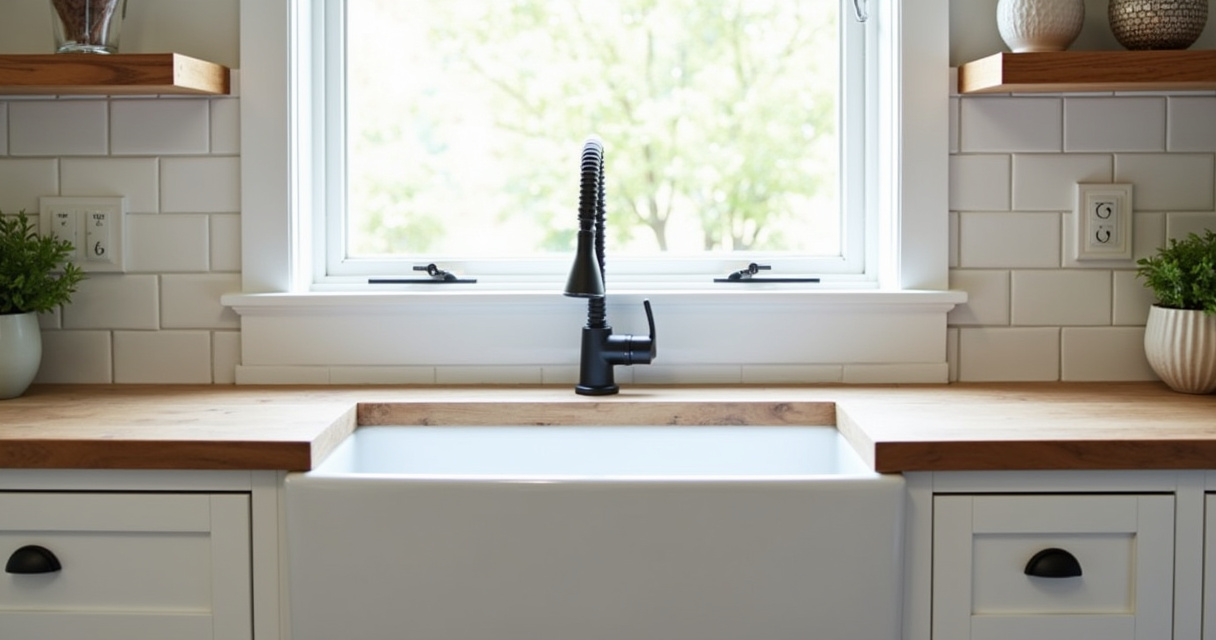
Is your kitchen feeling a bit out of alignment with your inner needs? Perhaps you’re embarking on a renovation journey and dreaming of a space that exudes warmth, comfort, and enduring elegance. If you long for a kitchen that feels both sophisticated and inviting, then look no further than the timeless appeal of traditional kitchen design.
More than just a trend, traditional kitchens create a heart of the home that feels grounded in history, craftsmanship, and classic style. Like a well-practiced meditation, traditional design brings balance and harmony to your daily life. Forget fleeting fads and embrace a design that will be beautiful and functional for years to come.
Ready to discover the secrets to creating your own stunning traditional kitchen? Let’s explore these design ideas that will inspire you to craft a space you’ll absolutely adore.
When it comes to cabinetry in a traditional kitchen, you simply can’t go wrong with Shaker style. These cabinets are defined by their simple, clean lines and recessed panel doors that bring a sense of order and simplicity to your kitchen space. Their beauty lies in their understated elegance and functionality, a design philosophy that originated with the Shaker religious sect who valued simplicity and utility above all else.
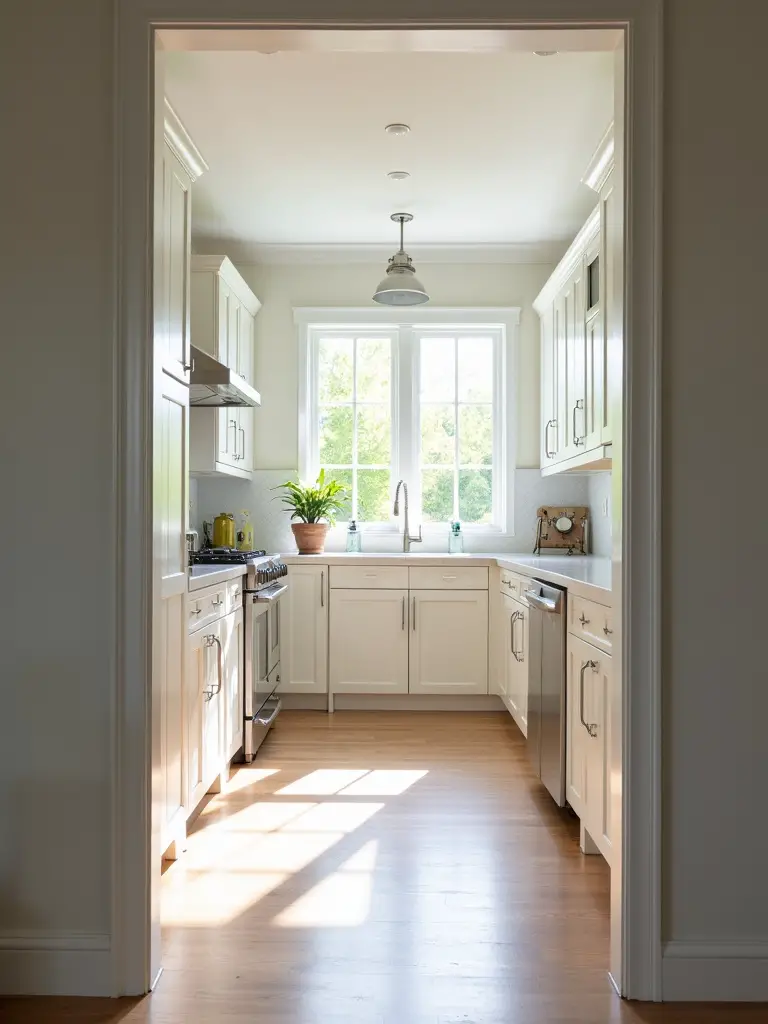
Shaker cabinets are incredibly versatile, blending seamlessly into various traditional kitchen aesthetics, from farmhouse to formal. Their timeless design ensures they won’t look dated in a few years, making them a mindful and intentional choice for the long haul. Classic colors like white, off-white, cream, light gray, and soft blues and greens are ideal for creating a serene environment that supports both functionality and visual harmony.
“Beauty rests on utility” – The Shaker design philosophy perfectly embodied in their cabinet style.
But here’s the thing: Shaker cabinets aren’t just beautiful—they’re practical too. Select hardwood like maple or birch for durability and a smooth finish for painting. Pair them with classic hardware like brushed nickel knobs or bin pulls to enhance their understated elegance without disrupting the peaceful ambiance of your kitchen.
Now, consider this… if you’re seeking a more formal atmosphere in your traditional kitchen, there’s another cabinet style worth exploring.
For those seeking a more formal and ornate feel in their traditional kitchen design, raised panel cabinet doors offer an excellent alternative. Unlike the flat panels of Shaker cabinets, raised panel doors feature a center panel that is elevated above the surrounding frame, creating depth, shadow lines, and a sense of visual richness that elevates the entire kitchen design.
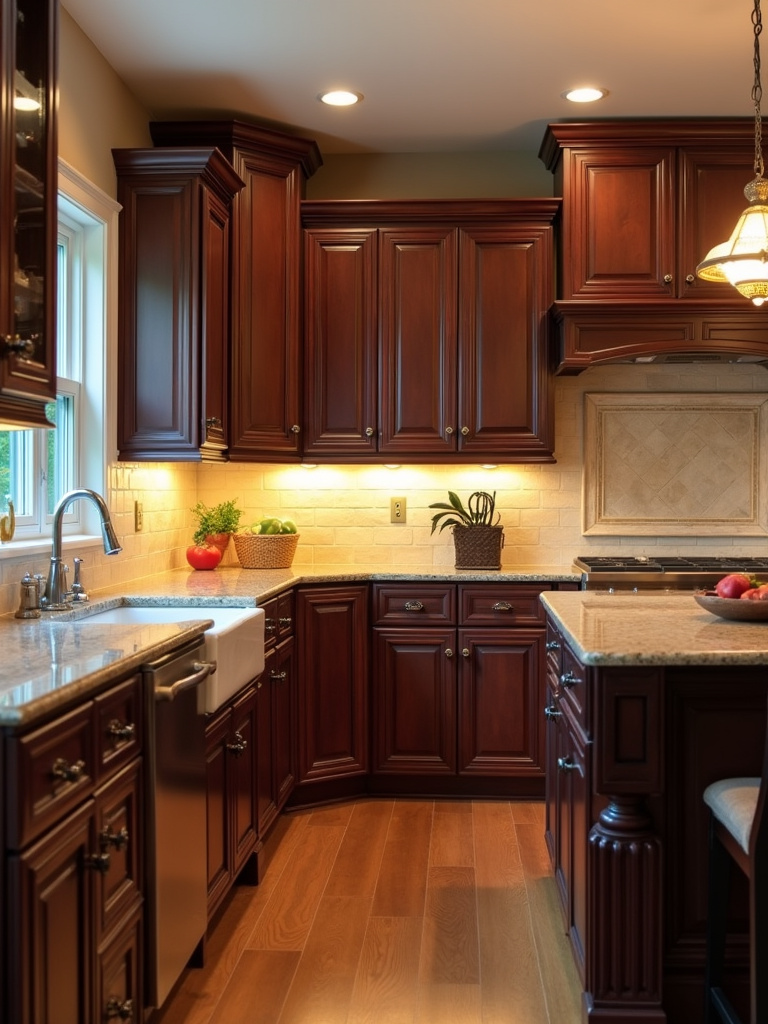
Raised panel cabinets are more decorative and elaborate than their Shaker counterparts, making them perfect for creating a grander, more sophisticated atmosphere. They lend themselves well to larger kitchens where their detail can truly shine, much like how a carefully designed meditation space benefits from thoughtful architectural elements that draw the eye and create visual interest.
The surprising part is that these cabinets were historically crafted by hand, requiring skilled carpentry to create the detailed panel and frame. This connection to craftsmanship and tradition brings an added layer of meaning to your kitchen space, creating an environment that honors the past while serving present needs.
Having explored cabinet door styles, let’s shift our focus to color and how it can set the ambiance in your traditional kitchen.
Color plays a crucial role in creating a harmonious kitchen space, and in traditional kitchen design, warm white or cream cabinetry creates a soft and inviting atmosphere. These colors are not only timeless but also incredibly versatile, acting as a beautiful backdrop for other traditional elements while promoting a sense of calm and clarity.
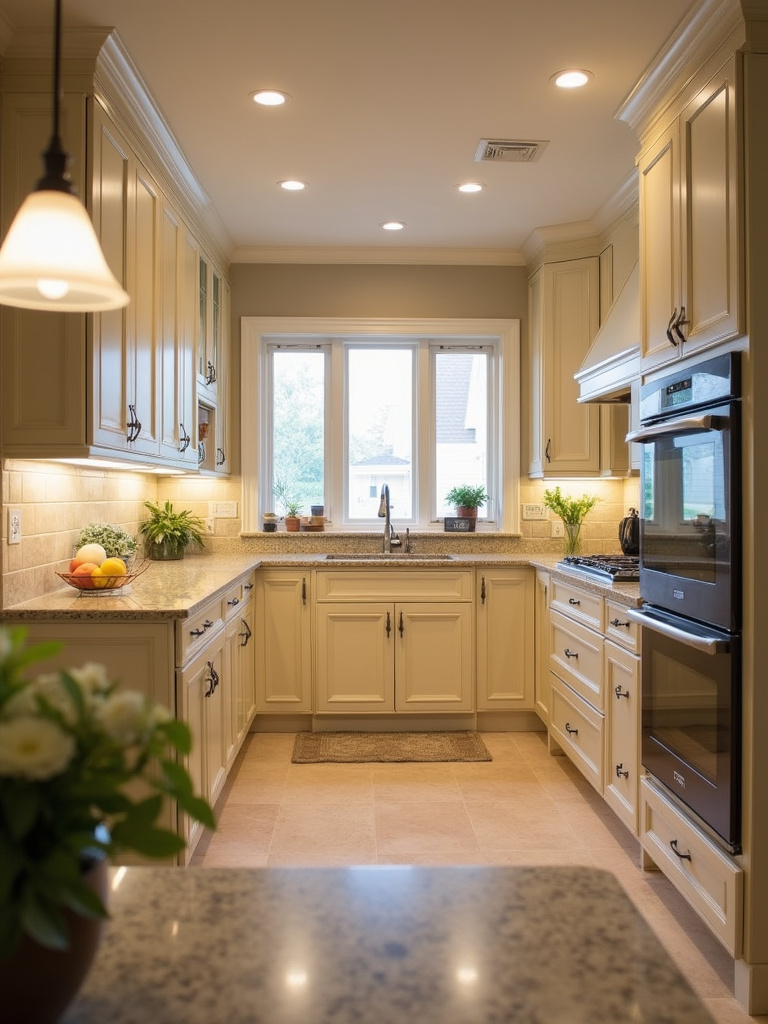
Warm whites and creams reflect light beautifully, making your kitchen feel brighter and more spacious, which is especially beneficial in smaller kitchens or those with limited natural light. They evoke a sense of serenity that allows other elements to breathe, much like how a neutral meditation space allows the mind to settle without distraction. Use a creamy white paint with warm undertones, like Benjamin Moore’s ‘Swiss Coffee’, for cabinetry to create a cozy and welcoming atmosphere.
What many people overlook is that historically, kitchens were often painted in lighter colors like cream to maximize natural light before the advent of reliable electric lighting. By choosing these timeless neutrals, you’re connecting with a practical tradition that has remained popular in kitchen design for centuries.
From the expanse of cabinetry, let’s zoom in on a central feature of many kitchens – the island, and how to give it a traditional spin.
A kitchen island is often the hub of activity in modern kitchens, and in a traditional setting, it’s an opportunity to add character and charm through furniture-style detailing. This approach involves incorporating elements that make the island resemble a freestanding piece of furniture rather than just a built-in counter—a mindful design choice that creates a unique focal point in your space.

Think of details like decorative legs, paneled sides, corbels, and even feet that ground the island like a beautiful piece of furniture. This furniture-like aesthetic adds a layer of sophistication and makes the island feel more like a curated piece within the space, echoing the look of older homes where kitchens often featured freestanding furniture for food preparation and gathering.
This is where everything changes in your traditional kitchen design. The island becomes not just a functional workspace but a signature element that anchors the room and creates a sense of history. Kitchen islands evolved from freestanding work tables in larger kitchens, bridging the gap between old-world charm and contemporary functionality.
Now that we’ve considered the island, let’s turn our attention to the countertops that will grace both the island and perimeter cabinets.
For countertops in a traditional kitchen design, granite and marble are enduring choices that exude beauty and sophistication. These natural stones bring an organic element into your kitchen space, creating a connection to the earth that enhances the mindful quality of your environment. Their unique veining and patterns ensure that no two countertops are exactly alike, giving your kitchen a truly one-of-a-kind character.
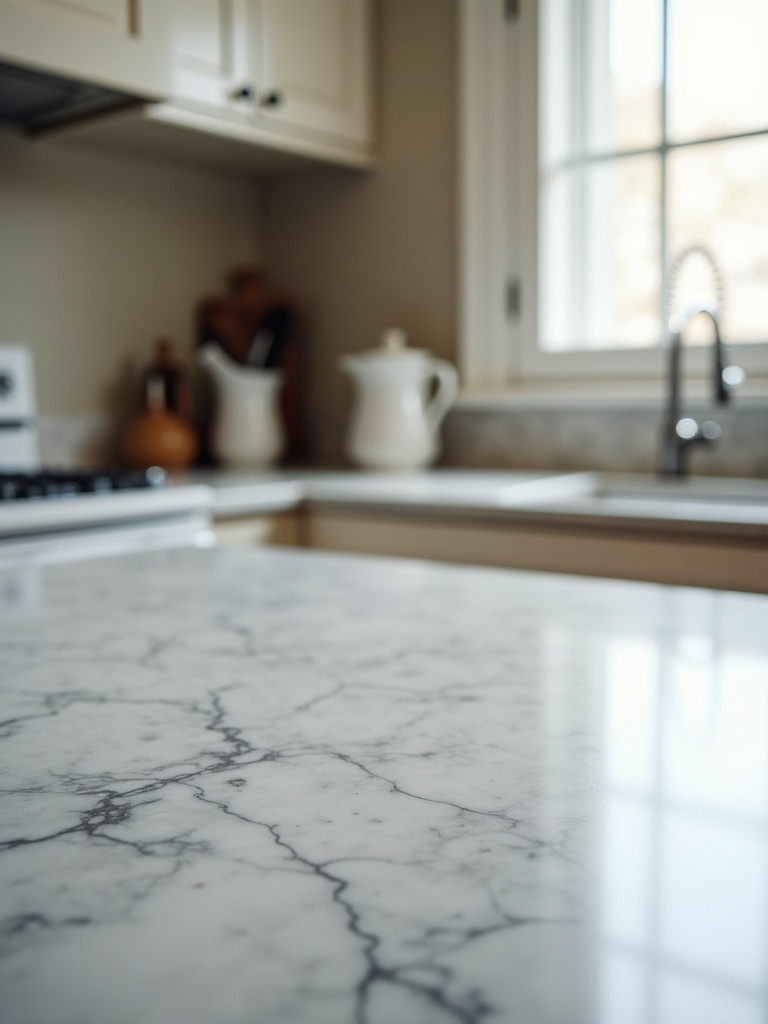
Granite is known for its robustness and resistance to scratches and heat, making it a practical choice for busy kitchens. Marble, while softer and more porous, offers an unparalleled elegance and luxurious look, particularly favored for its distinctive veining and cool, smooth surface. Both materials bring a sense of permanence and quality to a traditional kitchen that manufactured materials simply can’t replicate.
What’s fascinating is that marble has been used in architecture and design since ancient times, symbolizing wealth and sophistication. By incorporating these timeless materials into your kitchen, you’re participating in a design tradition that spans centuries, creating a space that feels both grounded and elevated.
Moving downwards, let’s consider a key element of the sink area that adds both function and rustic charm.
To infuse your traditional kitchen with a touch of rustic charm, consider installing a farmhouse sink, also known as an apron-front sink. These sinks are characterized by their exposed front apron that extends slightly beyond the cabinet, creating a distinctive and welcoming look that serves as a gentle reminder of simpler times and mindful living.

Farmhouse sinks evoke a sense of nostalgia, reminiscent of sinks found in country homes where functionality and practicality were paramount. They often come in generous sizes, making them incredibly practical for washing large pots and pans, further enhancing their appeal. White fireclay or porcelain farmhouse sinks create a clean, classic look, while copper or natural stone options add warmth and unique character.
The key detail though is that farmhouse sinks were originally designed to be very deep and practical for washing large quantities of food and dishes in a time before dishwashers. This connection to a more deliberate, hands-on way of living resonates with those seeking to create a kitchen that encourages mindfulness and presence.
Complementing the farmhouse sink, let’s look at faucet choices that enhance the traditional aesthetic.
For faucets in a traditional kitchen design, bridge faucets in polished nickel or brass finishes offer a touch of classic elegance and vintage appeal. Bridge faucets are distinguished by their visible “bridge” connecting the hot and cold water handles above the countertop, a design that harkens back to earlier plumbing styles and adds an authentic period detail to your kitchen.
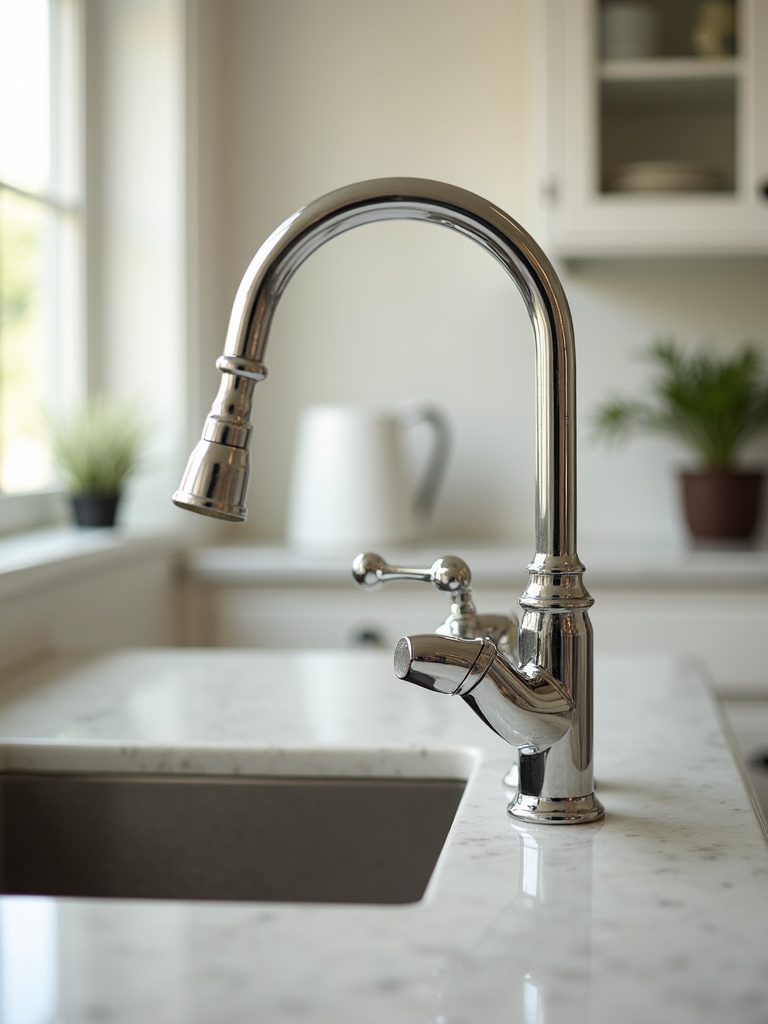
Polished nickel and brass finishes exude warmth and sophistication, often found in older homes before chrome became the dominant finish. Polished nickel offers a warm, subtle sheen and is more tarnish-resistant than polished brass, while brass provides a rich, golden hue that adds warmth and can develop a beautiful patina over time, enhancing its traditional character as it ages gracefully.
Here’s what you need to know: bridge faucets are inspired by early plumbing designs and add a vintage touch that feels both authentic and functional. This thoughtful detail reinforces the traditional kitchen aesthetic while providing the modern convenience we expect, creating a balance between past and present that’s at the heart of traditional design.
Moving down again, let’s consider the foundation of the kitchen – the flooring and a classic material choice.
Hardwood flooring is a quintessential element of traditional design, bringing undeniable warmth and beauty to a kitchen. Like a solid foundation for meditation practice, quality hardwood floors provide a grounding base for your traditional kitchen that feels both substantial and inviting underfoot. The natural grain and variations in wood create a warm and inviting atmosphere that complements the traditional style perfectly.
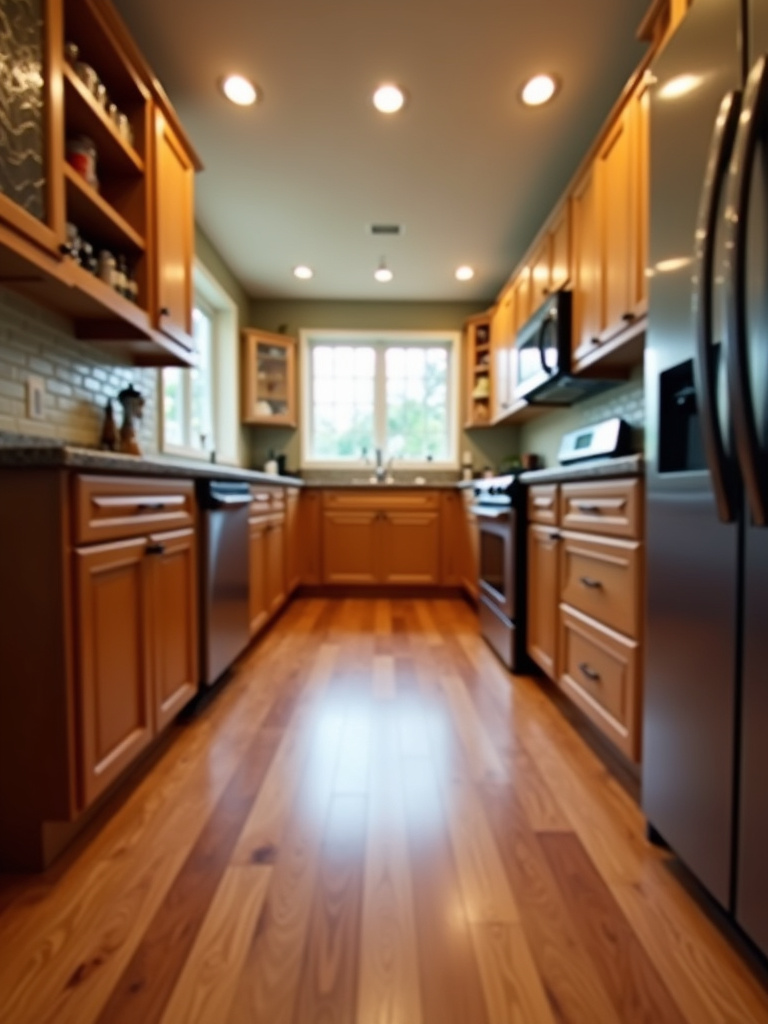
While kitchens present unique challenges for hardwood due to moisture, with proper sealing and maintenance, it remains a durable and stunning flooring option. Oak, maple, cherry, and hickory are excellent choices for traditional kitchens, offering varying hardness levels and distinctive grain patterns. Wide-plank oak hardwood flooring with a warm stain creates a classic and inviting traditional kitchen with timeless appeal.
The crucial point is that hardwood flooring has been used in homes for centuries and was a sign of craftsmanship and quality in traditional architecture. By choosing hardwood for your kitchen, you’re connecting with this rich heritage while creating a warm, natural foundation that enhances your kitchen’s inviting atmosphere.
For a backsplash that is both timeless and practical in a traditional kitchen design, subway tile remains an unbeatable choice. These rectangular ceramic tiles, typically 3×6 inches, gained their name from their widespread use in the New York City subway system in the early 20th century, bringing a clean, classic look that has stood the test of time.
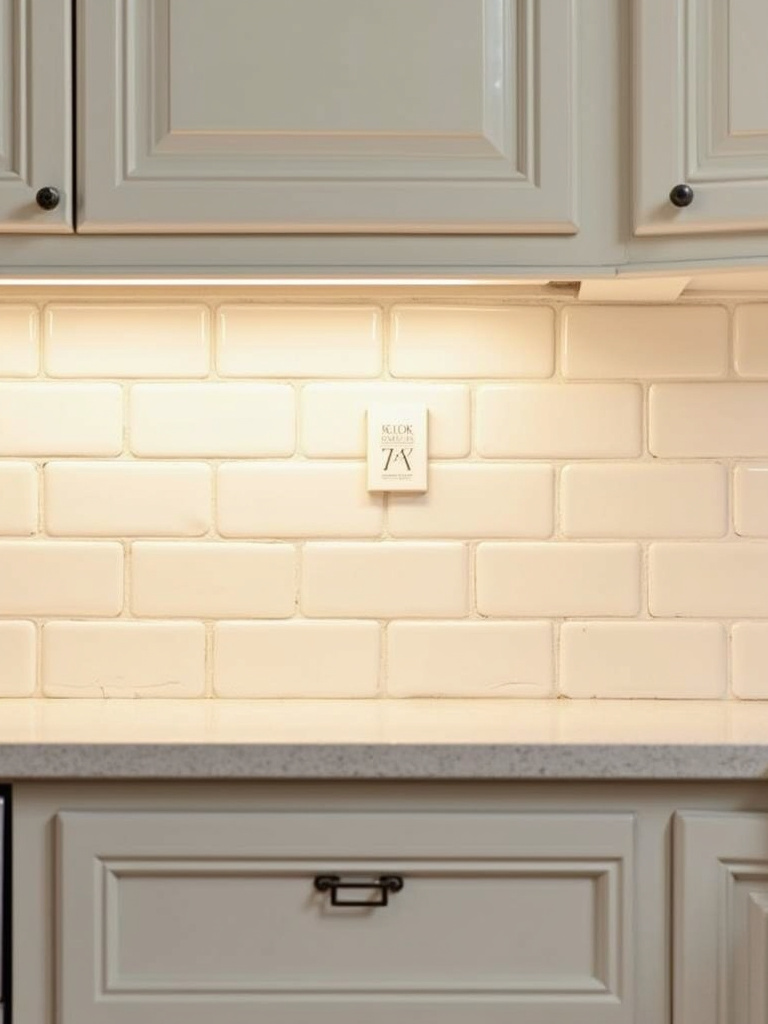
Subway tile offers a sense of simplicity and order, much like how a structured meditation practice provides clarity and focus. Their crisp lines and versatile application make them ideal for various kitchen styles, especially traditional ones. The standard horizontal brick pattern is the most classic arrangement, though herringbone and vertical stack bond patterns offer interesting alternatives that still honor the traditional aesthetic.
Let me break this down: subway tile was first used in the early 20th century for its durability, ease of cleaning, and bright, reflective surface. These same qualities make it perfect for today’s traditional kitchens, where practicality meets timeless style. The simple rectangular shape has proven to be incredibly versatile over the decades, adapting to changing design trends while maintaining its classic appeal.
Now, let’s illuminate your traditional kitchen with lighting choices that enhance its elegance and create the perfect ambiance.
Lighting is key to setting the mood in any kitchen, and in a traditional kitchen design, elegant pendant lights with fabric or glass shades are perfect for adding both illumination and style. These fixtures create pools of gentle light that foster a sense of intimacy and warmth, much like how soft lighting enhances a meditation space and promotes relaxation.
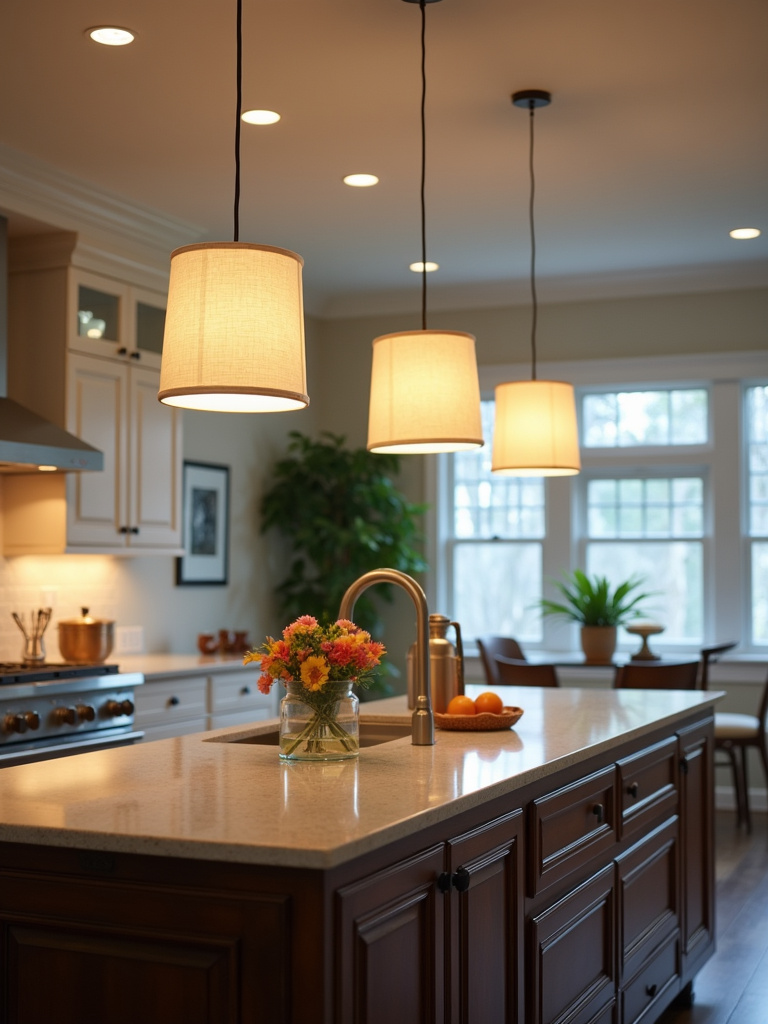
Fabric shades diffuse light softly, creating a warmer and more inviting ambiance while introducing texture and warmth to the kitchen. Glass shades, on the other hand, can be ornate or simple, reflecting light beautifully and adding a touch of sophistication. Whether hung over an island, breakfast bar, or sink area, pendant lights serve as both functional task lighting and decorative focal points that enhance the overall elegance of your traditional kitchen.
Here’s how it works: pendant lights have evolved from simple hanging lamps to decorative fixtures that are integral to kitchen design. The right pendants not only illuminate your work surfaces but also reinforce your traditional aesthetic through their design, material, and finish. Consider using them in odd numbers (usually three) over islands for a balanced yet dynamic visual arrangement.
To further layer the lighting, let’s consider wall-mounted fixtures that enhance ambiance and architectural details.
Beyond overhead and pendant lighting, sconce lighting is a wonderful addition to a traditional kitchen design to create layered illumination and enhance the ambiance. Wall-mounted sconces provide soft, ambient light that fills in shadowed areas and adds a warm glow to the space, creating a more balanced energetic environment.
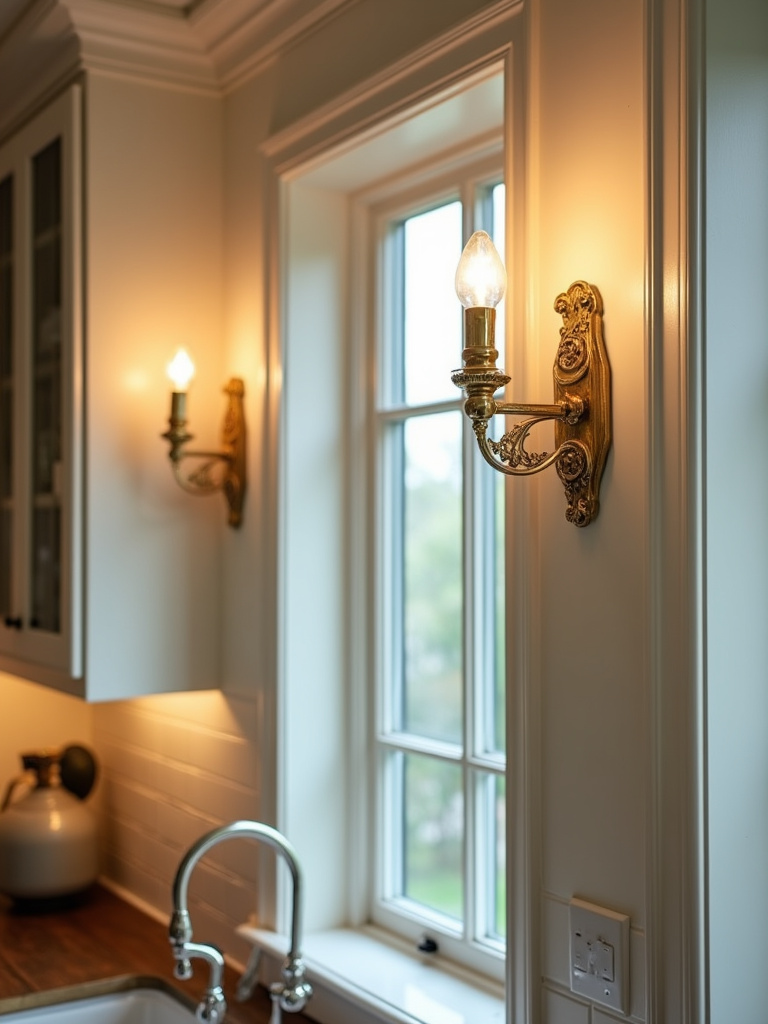
Sconces are perfect for highlighting architectural features, flanking windows, or adding a decorative touch to walls. Whether you choose classic brass sconces with candle-style bulbs or lantern-style fixtures, they contribute to a more inviting and multi-dimensional lighting scheme. This approach to lighting goes beyond pure functionality, transforming your kitchen into a truly welcoming sanctuary for both cooking and gathering.
What’s really at play here is that sconces have a long history, originally used with candles or oil lamps before electricity, providing both light and decorative wall accents. This historical connection adds authenticity to your traditional kitchen while the vertical visual interest draws the eye upward, enhancing the sense of height and spaciousness in the room.
Moving to the smaller details that make a big impact, let’s consider cabinet hardware that enhances the traditional feel.
Cabinet hardware may seem like a minor detail, but in traditional kitchen design, it’s a crucial element in defining the style and character of the space. Decorative knobs and pulls in antique brass finishes offer a warm, aged, and slightly muted golden tone that exudes classic elegance and vintage charm without being overly shiny or modern—much like how small mindful touches in a meditation space can transform the entire experience.
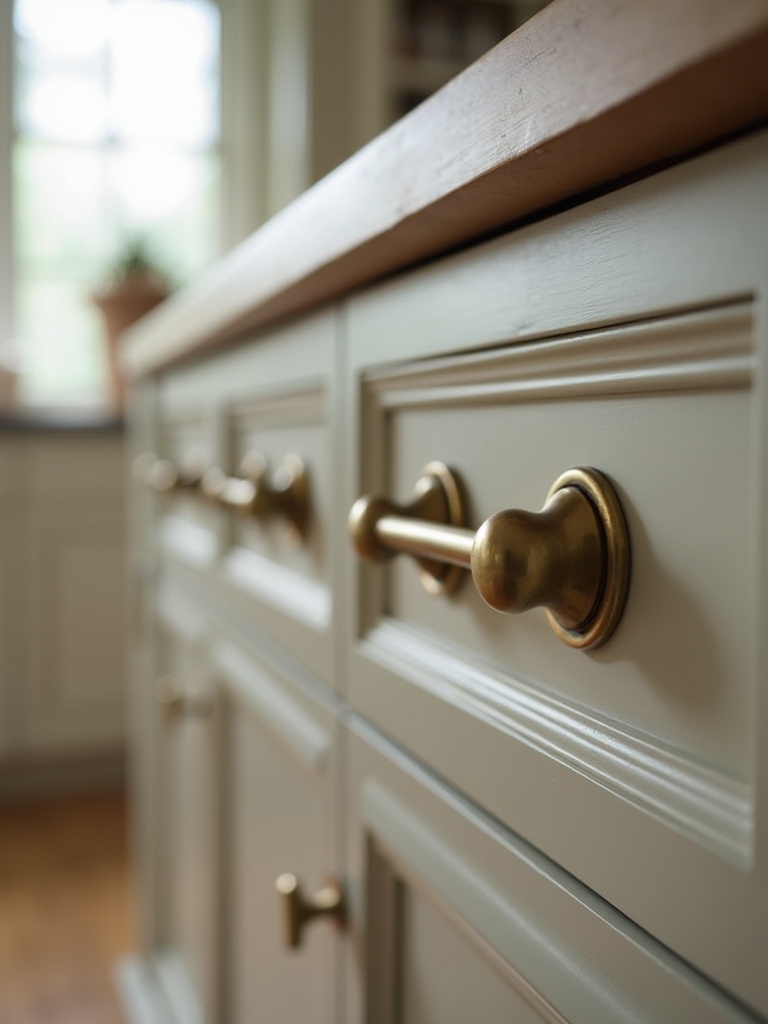
The right hardware can elevate the entire look of your cabinetry, adding a touch of sophistication and refinement that ties the whole kitchen design together. For traditional kitchens, hardware often features ornate details and is made from materials like brass, bronze, or nickel. Antique brass in particular offers a timeless quality that ages beautifully, developing a patina that adds character over time.
At its core, this means that brass has been used in hardware for centuries due to its durability and attractive golden color, often associated with quality and craftsmanship. This connection to traditional materials reinforces the authentic character of your kitchen while providing the practical function of allowing easy access to cabinets and drawers.
To add visual interest and a personal touch, let’s explore the use of open shelving in your traditional kitchen.
While traditional kitchens often feature ample closed cabinetry, incorporating open shelving can bring a welcome element of display and visual interest to your space. Open shelves break up expanses of cabinetry and provide a perfect opportunity to showcase beautiful china, cookbooks, and decorative items that reflect your personality and style, creating a more personal and meditative environment.

This approach not only adds character to the kitchen but also makes frequently used items more accessible and creates a more relaxed and lived-in feel. Open shelving was more common in older kitchens before the widespread use of upper cabinets, reflecting a more utilitarian approach to storage and display that has come full circle in popularity for its authentic character and functional benefits.
Let me paint you a picture: well-styled open shelving creates visual breathing room in your kitchen, allowing energy to flow more freely while showcasing items that bring you joy. The display of cherished pieces like heirloom china or vintage cookbooks adds a personal narrative to your kitchen, connecting your space to memories and traditions in a way that closed cabinetry simply cannot achieve.
To maintain a seamless and uncluttered look, consider integrating appliances into the cabinetry for a cohesive traditional kitchen design.
In a traditional kitchen, the goal is often to create a sense of timeless elegance and minimize the visual impact of modern appliances. Paneled appliances offer the perfect solution for achieving this seamless look, allowing the kitchen to maintain its period authenticity while incorporating all the conveniences of modern technology—a beautiful balance of form and function.
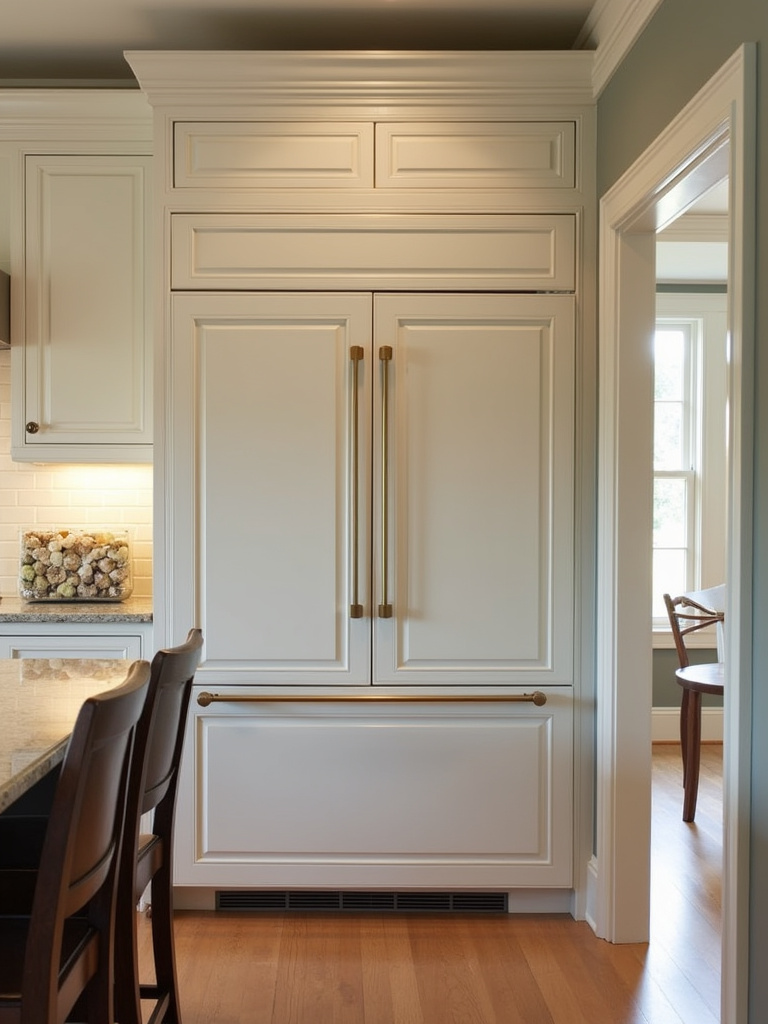
By concealing refrigerators, dishwashers, and sometimes even microwaves behind custom panels that match the kitchen cabinetry, you create a cohesive and integrated design. This allows the focus to remain on the beautiful cabinetry, countertops, and other traditional design elements, rather than on the appliances themselves. The result is a kitchen that feels more like a thoughtfully designed living space than a utilitarian work area.
The real story begins when you understand that paneled appliances were initially a luxury feature but have become increasingly popular in high-end traditional kitchens as a way to achieve a polished and seamless look. This approach emphasizes the design elements rather than the technology, creating a more timeless and serene environment that aligns perfectly with traditional kitchen design principles.
For a cozy and informal dining space within the kitchen, let’s think about breakfast nooks that invite gathering and connection.
Creating a cozy breakfast nook is a wonderful way to add charm and functionality to a traditional kitchen design. A breakfast nook offers a casual and inviting dining space right in the heart of the kitchen, perfect for everyday meals, quiet morning rituals, or relaxed gatherings with family and friends—a space that naturally encourages mindfulness and presence during meals.
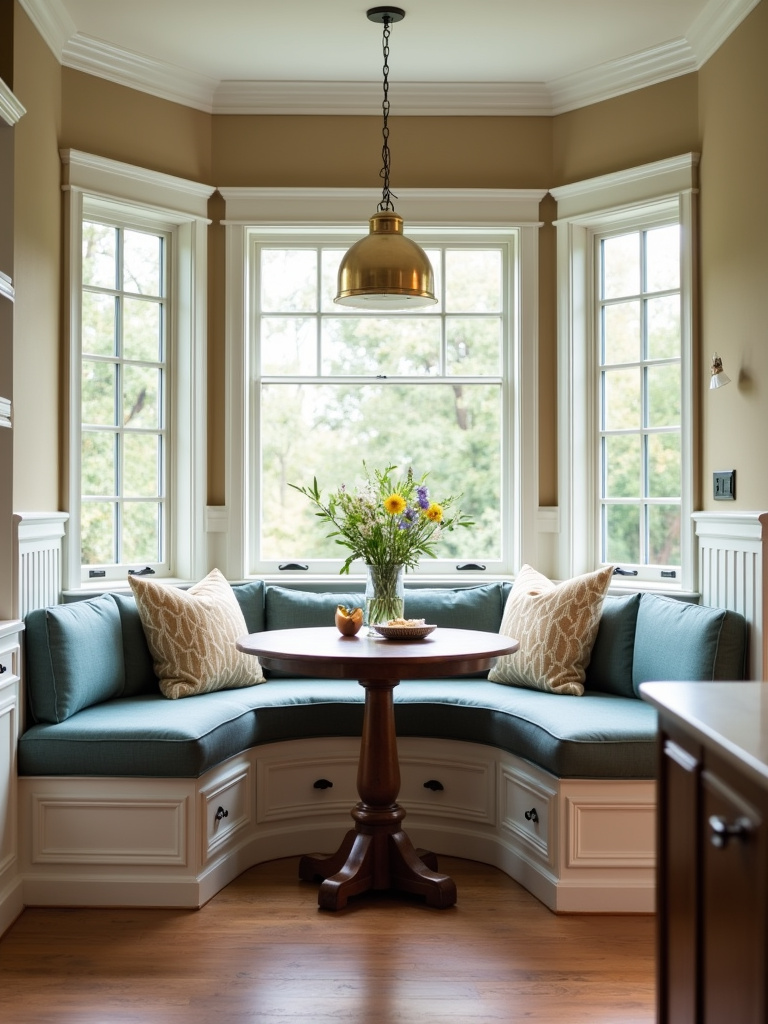
Banquette seating, with its built-in bench style, is particularly well-suited for nooks as it maximizes space, provides comfortable seating, and enhances the intimate and cozy atmosphere. Elements like soft cushions and pillows, warm lighting (like a pendant light above the table), and a round or oval table all contribute to creating a space that feels sheltered and nurturing, perfect for starting or ending your day.
The breakthrough came when designers realized that breakfast nooks became popular in early 20th-century homes as a more casual and convenient dining space compared to formal dining rooms. This connection to everyday living and casual comfort makes breakfast nooks a perfect element in traditional kitchens that prioritize both beauty and practicality.
To bring a sense of order and visual harmony, let’s consider the principle of symmetry in traditional kitchen design.
Symmetry is a fundamental principle in traditional design, and applying it to your kitchen layout creates a sense of balance, order, and formality. A symmetrical kitchen feels visually harmonious and sophisticated, much like how balanced energies in a meditation space contribute to a sense of peace and equilibrium. This approach reflects classic architectural principles and creates a space that feels intentionally designed rather than haphazardly assembled.
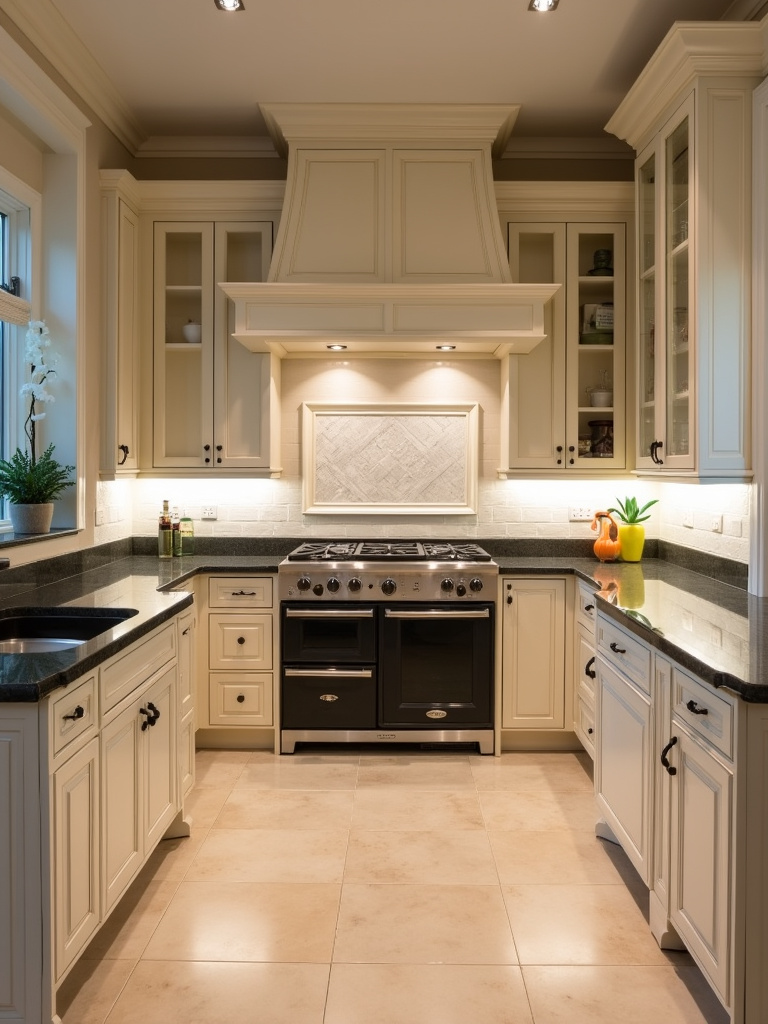
Achieving symmetry often involves centering key elements like the range or sink on a focal wall and flanking them with matching cabinetry, lighting, and decorative elements. Island placement, pendant lighting, and even the arrangement of decorative items can all contribute to the overall sense of balance. This harmonious approach creates a kitchen that feels restful and pleasing to the eye, with a timeless elegance that never goes out of style.
The essence of it all is that symmetry has been a fundamental principle in architecture and design for centuries, dating back to classical Greek and Roman periods, symbolizing order and perfection. In traditional kitchen design, this symmetrical balance creates a sense of calm and predictability, making spaces feel more restful and aesthetically pleasing—qualities that contribute to a more mindful and centered cooking and dining experience.
Crown molding and wainscoting are classic architectural details that add a layer of sophistication and refinement to a traditional kitchen design. These elements bring visual interest and a sense of craftsmanship that elevates your kitchen beyond merely functional to truly architectural. Crown molding, installed at the junction of walls and ceilings, creates a finished and elegant look, adding height and polish to the room.
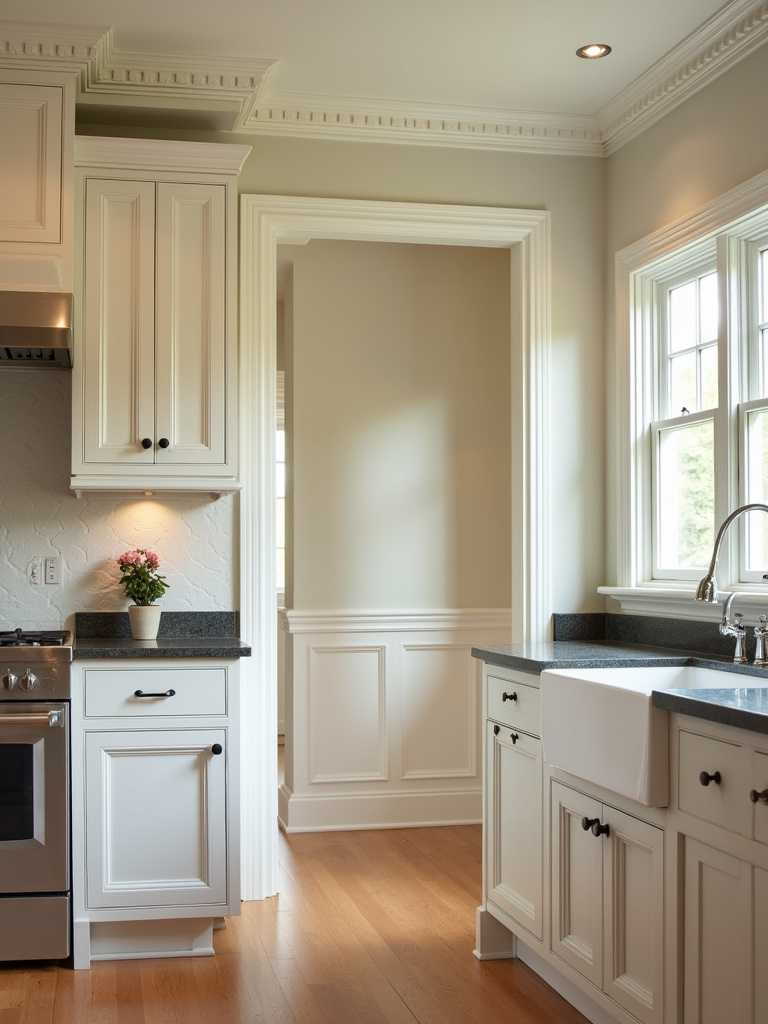
Wainscoting, applied to the lower portion of walls, provides texture, protection, and a traditional architectural element that enhances the overall character of the kitchen. In meditation spaces, we often incorporate architectural elements that draw the eye and create a sense of intentional design—these same principles apply beautifully to traditional kitchens, where these details contribute to a sense of timelessness and permanence.
Let me show you another perspective: crown molding and wainscoting were originally functional elements in older homes, helping to conceal imperfections and protect walls, but evolved into decorative features that signify quality and attention to detail. By incorporating these elements into your traditional kitchen, you’re honoring historical design traditions while creating a more refined and finished space.
For an authentic and grounding feel, let’s focus on using natural materials throughout your traditional kitchen.
Traditional kitchen design is deeply rooted in the use of natural materials, particularly wood and stone. These materials bring warmth, texture, and an organic feel that is essential to creating a truly traditional space that feels connected to the earth and its elements. Natural materials have an inherent energy that synthetic alternatives simply cannot replicate—they bring life and vibrancy to your kitchen space.
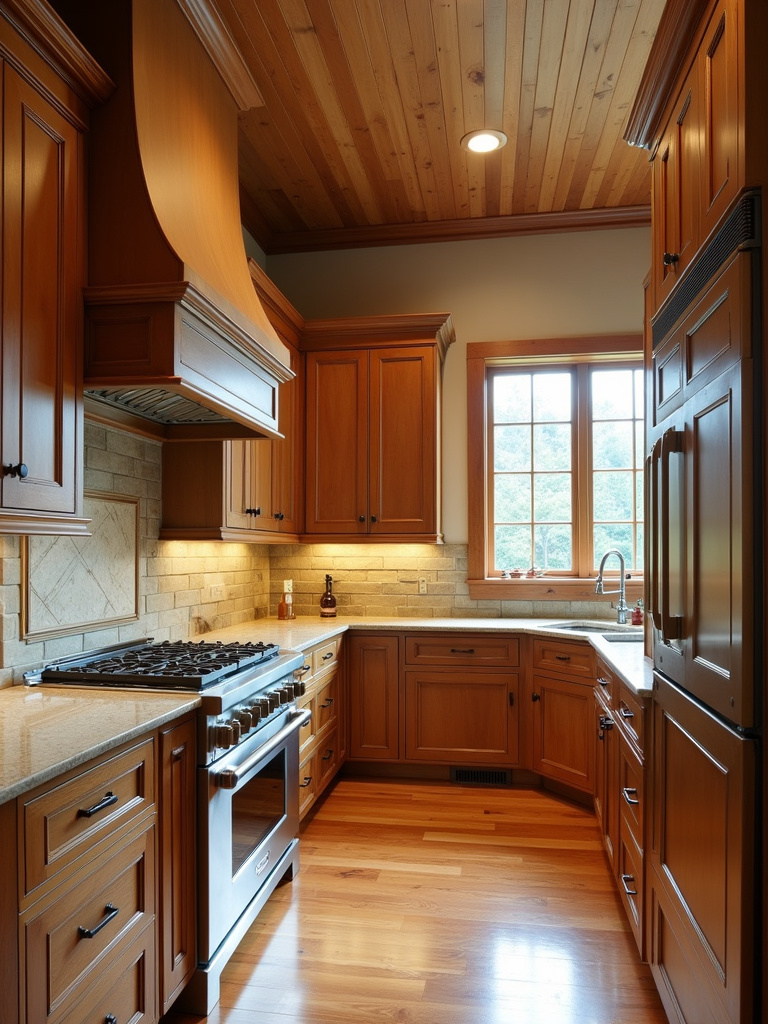
Wood cabinetry, stone countertops, hardwood flooring, and even stone or brick accents all contribute to a kitchen that feels grounded in nature and craftsmanship. The variations in grain, color, and texture found in natural materials add visual interest and depth, creating a kitchen that feels rich and layered rather than flat and one-dimensional. This approach to materials evokes a sense of timelessness and quality that resonates with the core principles of traditional design.
Here’s the unexpected twist: historically, kitchens were built primarily with natural materials readily available locally, reflecting regional resources and craftsmanship. By returning to these natural materials in your traditional kitchen design, you’re not only creating a beautiful space but also connecting with sustainable design principles that have guided building practices for centuries.
To soften the hard surfaces and add comfort, let’s consider classic textiles that enhance the warmth of your traditional kitchen.
Textiles play a vital role in softening the hard surfaces of a kitchen and adding warmth and comfort to the space. In a traditional kitchen design, classic textiles like linen and cotton are ideal choices that bring a sense of timeless elegance and tactile comfort. These natural fibers resonate with the same authentic quality as other natural materials in your kitchen, creating harmony and balance.
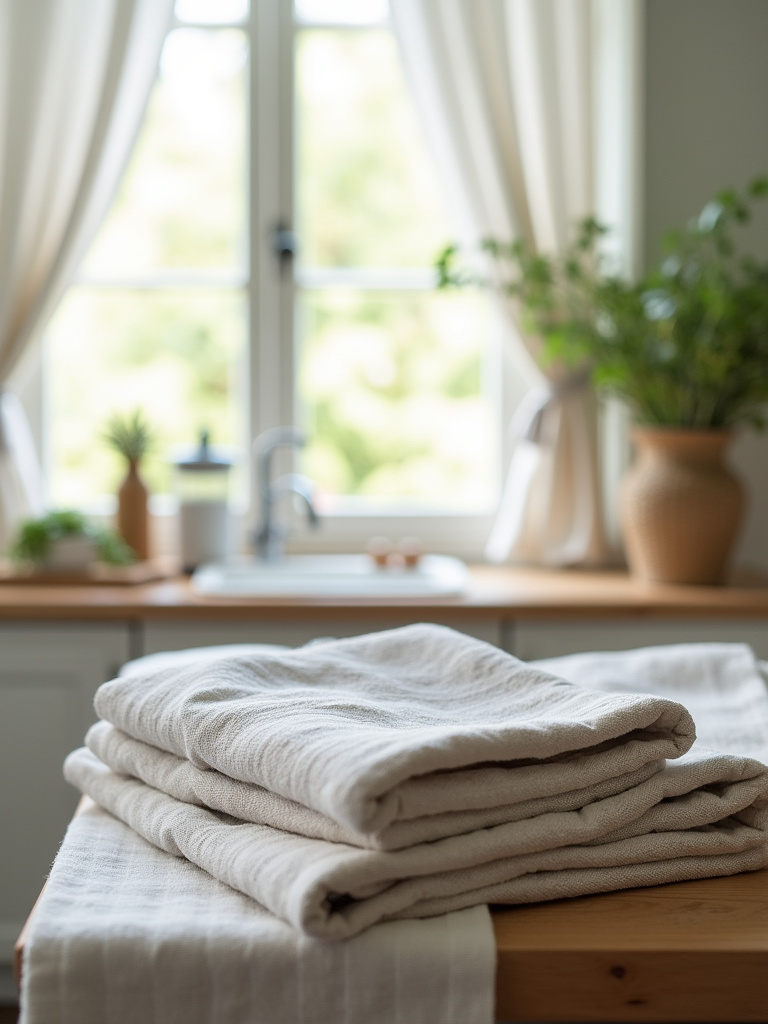
Linen and cotton offer a timeless, soft, and comfortable feel that perfectly complements the warm and inviting atmosphere of traditional kitchens. Use these materials for window treatments, seat cushions, tablecloths, kitchen towels, and even decorative accents like throw pillows in a breakfast nook. The subtle texture and natural imperfections of linen and the soft comfort of cotton add layers of visual and tactile interest that enhance the overall traditional aesthetic.
It’s kinda like how a meditation cushion creates comfort for your practice—these textiles create comfort in your kitchen environment. Linen and cotton have been used for textiles for thousands of years, valued for their durability, comfort, and natural beauty. Their timeless quality makes them particularly well-suited to the enduring and comfortable feel of traditional kitchens, where they continue to be as relevant today as they were centuries ago.
To infuse personality and a sense of history, let’s incorporate antique and vintage accessories into your traditional kitchen.
To truly make your traditional kitchen unique and full of character, incorporate antique or vintage kitchen accessories that tell a story and create connections to the past. These items bring a sense of history, personality, and charm that cannot be replicated with new pieces, much like how meaningful objects enhance a meditation space with their energy and significance.
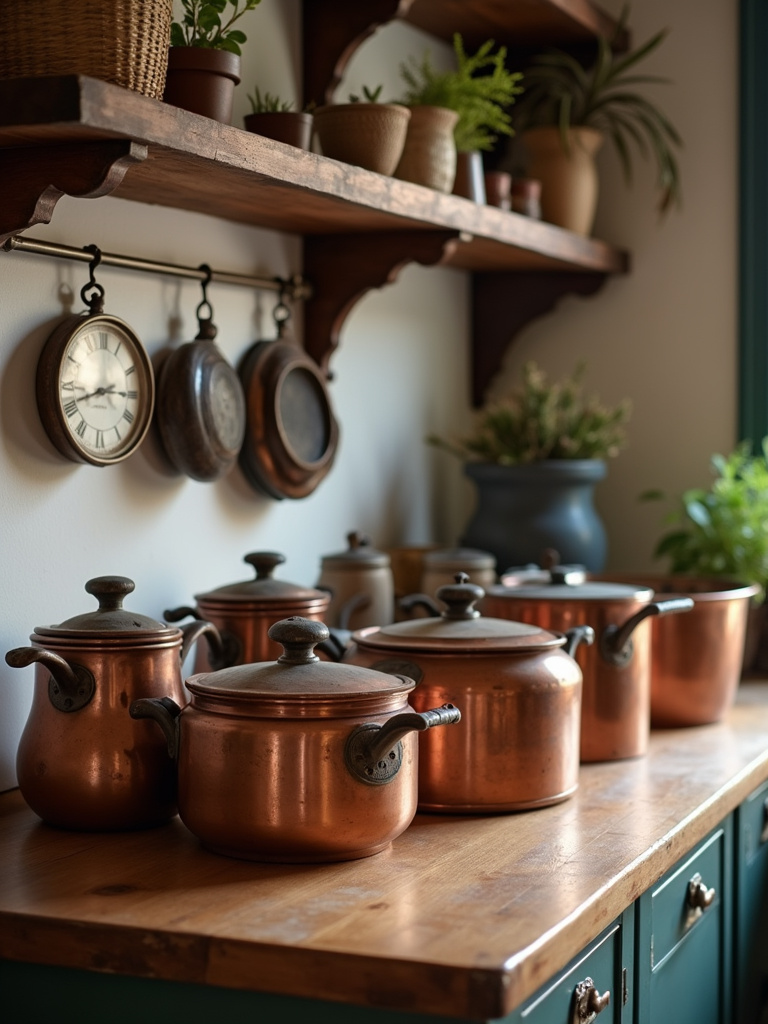
Vintage accessories add a layer of depth and individuality to the space, making it feel more personal and less generic. Consider displaying antique copper pots, vintage scales, old wooden cutting boards, antique china, vintage advertising signs, or antique lighting fixtures. These elements not only serve as beautiful decorative accents but also create a kitchen with soul and character that feels collected over time rather than assembled all at once.
I can already hear you saying: “But where do I find these items?” Antique shops, flea markets, estate sales, and online marketplaces are all excellent sources for finding unique vintage pieces. The joy of incorporating these items is that they’re often more affordable than new equivalents while bringing irreplaceable character to your space. Using vintage items is also a sustainable approach to decorating, giving new life to pre-owned objects.
To unify the overall design, let’s consider the color palette that will tie all elements of your traditional kitchen together.
A warm, neutral color palette is a cornerstone of traditional kitchen design, creating a serene backdrop that allows architectural details and natural materials to shine. Colors like creams, beiges, soft grays, and whites provide a timeless and versatile foundation that is both elegant and inviting—similar to how neutral tones in a meditation space allow the mind to settle without distraction.
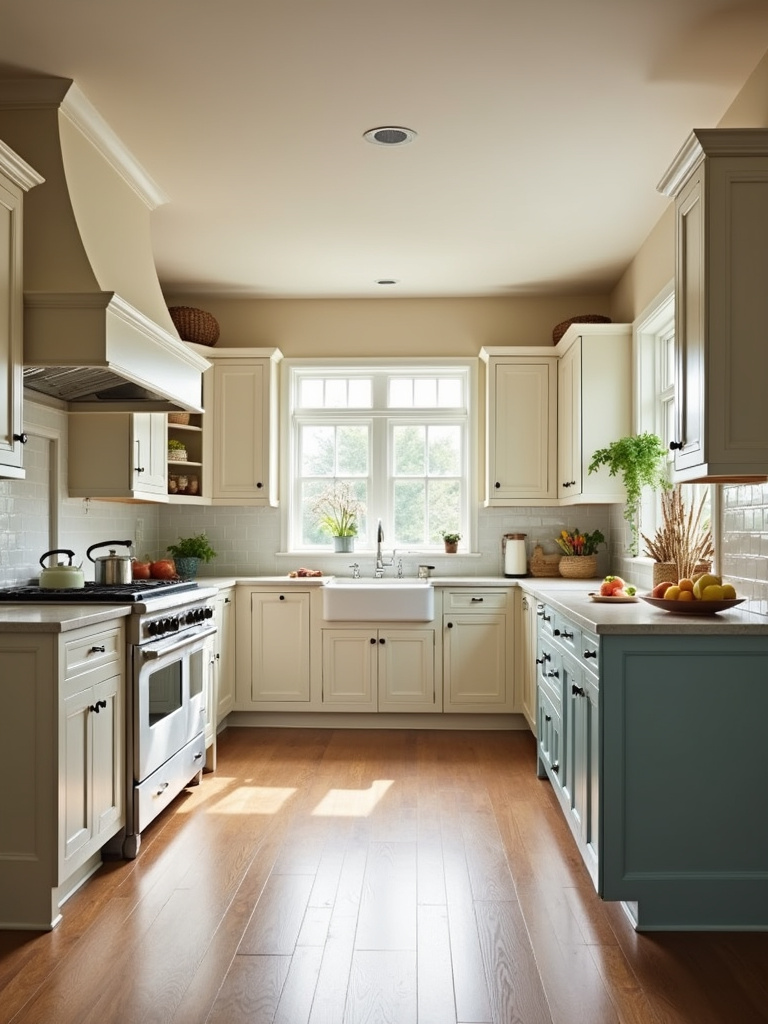
These neutral tones create a sense of spaciousness and light while still feeling warm and comfortable, a balance that’s essential in traditional kitchens. To prevent a neutral palette from feeling monotonous, incorporate accents of color through textiles, accessories, or even a painted island. This approach allows for flexibility and personality while maintaining the overall classic and sophisticated feel of a traditional kitchen.
When all is said and done, neutral color palettes have been popular in interior design for centuries, offering a timeless and adaptable foundation that transcends passing trends. In traditional kitchens, these warm neutrals create both visual harmony and emotional comfort, making your kitchen a place where everyone naturally wants to gather and linger.
To enhance the windows and control light, let’s think about window treatments that complement your traditional kitchen design.
Window treatments are essential for completing the look of any kitchen, and in a traditional setting, soft fabrics and classic patterns are the perfect choice. These elements add softness, privacy, and control light while also introducing pattern and texture that enhance the overall warmth of your kitchen space—much like how the right window coverings in a meditation room can filter light to create the perfect ambiance.
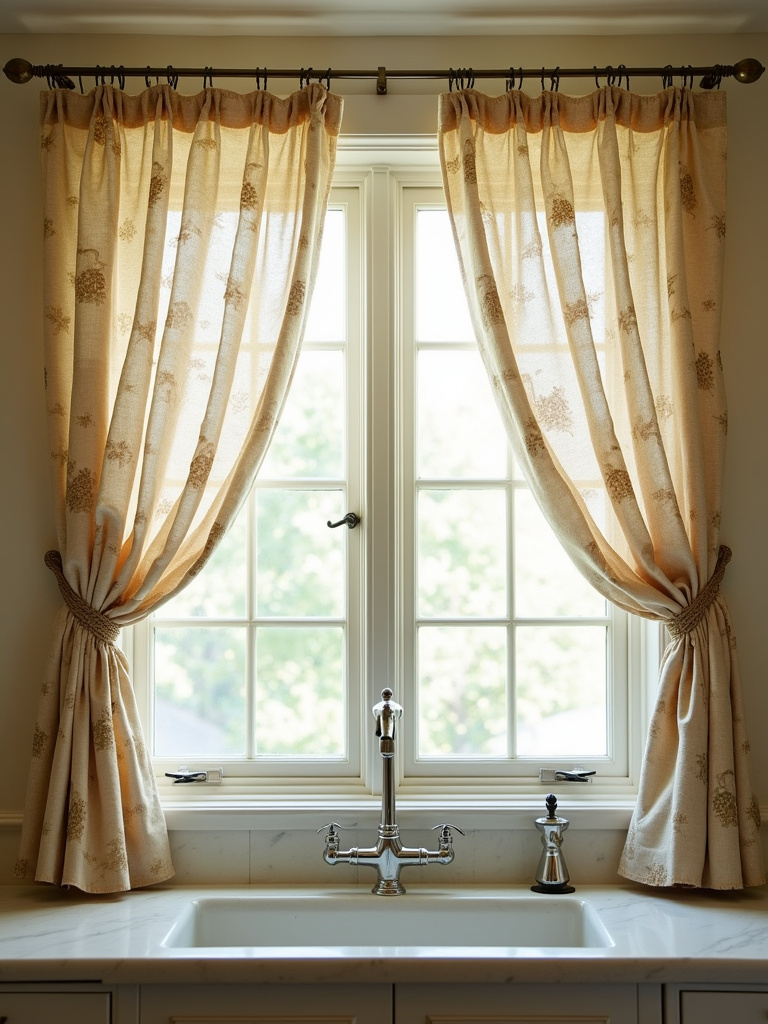
Opt for tailored curtains, Roman shades, or valances in linen, cotton, or other soft fabrics with classic patterns like stripes, florals, or checks. These window treatments soften the hard lines of windows and add a layer of comfort and refinement to your traditional kitchen. The right window treatments also frame views and create visual anchors in the room, contributing to the overall balanced composition.
Picture it this way: window treatments in a traditional kitchen are like the final brushstroke on a painting, bringing all elements together into a cohesive whole. They’ve been used for centuries for both practical and decorative purposes, evolving from simple fabric panels to sophisticated designs that enhance the architecture of a space while performing essential functions of light control and privacy.
For a blend of function and decor, let’s consider practical storage solutions that are also visually appealing in your traditional kitchen.
In a traditional kitchen design, even functional storage can be beautiful and contribute to the overall aesthetic. Pot racks and plate racks are excellent examples of functional decor that add character while serving practical purposes, much like how mindfully designed storage solutions in meditation spaces can be both beautiful and useful.
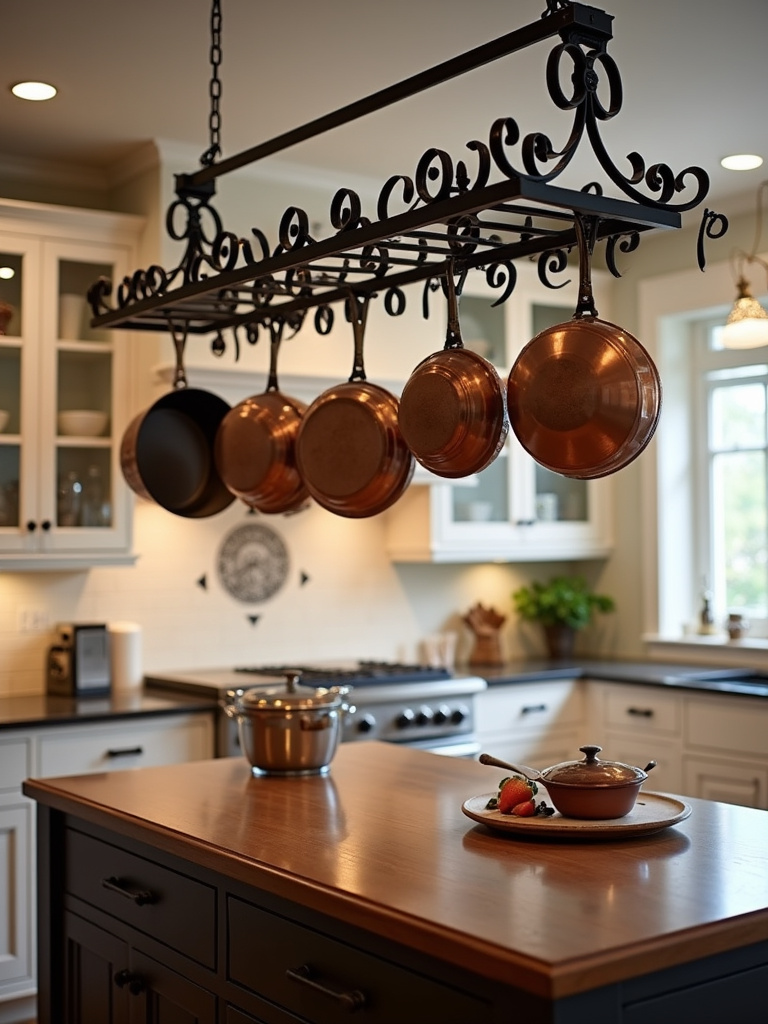
Pot racks, hung from the ceiling or wall, provide accessible storage for cookware while showcasing their shapes and materials. Plate racks offer a decorative way to store and display plates, adding visual interest and freeing up cabinet space. These elements are both practical and charming, enhancing the traditional kitchen’s character while keeping frequently used items within easy reach—a perfect balance of form and function.
The process goes like this: pot racks and plate racks were historically common in kitchens before built-in cabinetry became standard, reflecting a more open and utilitarian approach to kitchen storage. By incorporating these elements into your traditional kitchen, you’re connecting with historical kitchen design while creating practical storage solutions that double as beautiful display opportunities.
Finally, to create a strong visual anchor in your traditional kitchen, let’s consider a decorative range hood as a focal point.
To complete your traditional kitchen design with a statement piece, consider creating a focal point with a decorative range hood. A well-designed range hood, especially in wood, metal, or custom finishes, can become a stunning centerpiece above your cooktop that draws the eye and anchors the entire design. Like a beautiful shrine or altar in a meditation space, a decorative range hood becomes the heart of your kitchen—both visually and energetically.
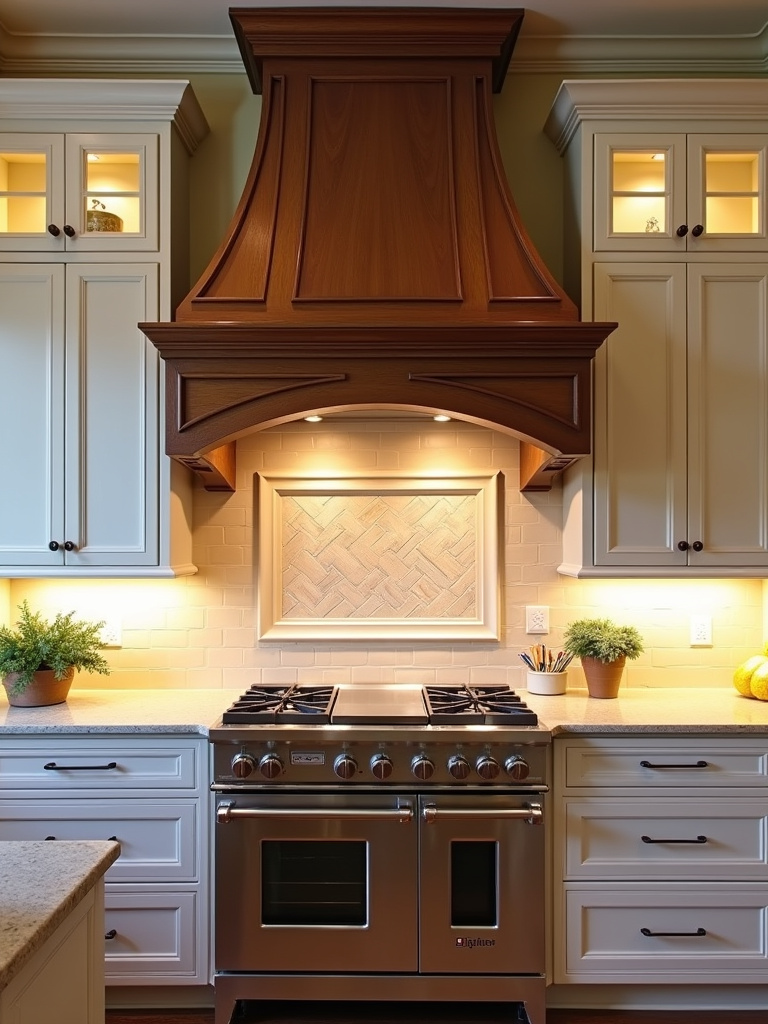
This architectural element not only serves the functional purpose of ventilation but also significantly enhances the visual appeal and sophistication of the kitchen. Custom wood range hoods with ornate details, metal range hoods in copper or stainless steel with decorative bands, or plaster range hoods that mimic built-in chimney structures are all popular options that can be tailored to complement your specific traditional kitchen style.
Do you see how huge that is? A decorative range hood historically evolved from simple chimney flues to become integrated elements of kitchen design. Today, it serves as both a practical necessity and a design opportunity to create a focal point that expresses your personal style while honoring traditional design principles. When this central element is thoughtfully designed, it sets the tone for the entire kitchen and creates a sense of intentional design.
Creating a timeless traditional kitchen is about more than just choosing classic elements; it’s about weaving together a tapestry of design details that evoke warmth, elegance, and enduring style. Each decision, from cabinet style to lighting fixtures, contributes to a space that feels both beautiful and functional—a kitchen that nurtures both body and spirit.
Traditional kitchen design offers a unique opportunity to create a heart for your home that honors the past while embracing the present. The enduring appeal of Shaker cabinets, the warmth of natural materials, the sparkle of polished nickel, and the comfort of soft textiles all work together to create a space that feels grounded and authentic. Like a well-designed meditation space, a thoughtful traditional kitchen supports daily rituals and meaningful connections.
As you embark on creating your own traditional kitchen, remember that the most beautiful spaces evolve over time, reflecting personal experiences and thoughtful choices. Whether you’re renovating an existing kitchen or designing a new one, these 24 ideas provide a foundation for creating a space that will remain beautiful and relevant for years to come—a true sanctuary within your home where memories are made, meals are shared, and timeless style truly shines.